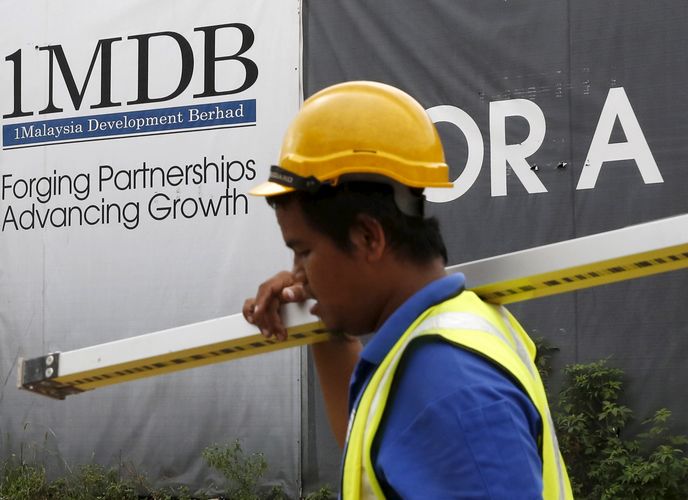(Reuters) - Goldman Sachs’ work with Malaysian sovereign wealth fund 1MDB is under the spotlight over US government allegations that billions of dollars were diverted for the personal use of officials and some people associated with them.
The Wall Street bank helped 1MDB, which was founded by Malaysian Prime Minister Najib Razak in September 2009, raise US$6.5bn in three bond sales in 2012 and 2013 to invest in energy projects and real estate to boost the Malaysian economy.
Instead, more than US$2.5bn raised from those bonds was misappropriated by high-level 1MDB officials, their relatives and associates, according to US Department of Justice civil lawsuits filed in court on Wednesday.
Prosecutors said the money was used to buy artwork, including paintings by Vincent Van Gogh and Claude Monet, luxury properties in New York and London and to pay off gambling debts in Las Vegas.
Goldman Sachs, which earned close to US$600m to arrange and underwrite the 1MDB bonds, has not been accused of any wrongdoing.
Still, the lawsuits allege investors were not properly informed about the use and nature of the bonds.
The US Justice Department said that the offering circulars for two of the bonds issued in 2012 contained “material misrepresentations and omissions” over what the proceeds of the bonds would be used for and the nature of the relationship between 1MDB and International Petroleum Investment Company (IPIC), an entity owned by the Abu Dhabi government.
IPIC guaranteed one bond directly and another one indirectly. The US government also alleged in its Wednesday lawsuit that no reference to IPIC’s indirect guarantee was included on one of the offering circular.
“We helped raise money for a sovereign wealth fund that was designed to invest in Malaysia. We had no visibility into whether some of those funds may have been subsequently diverted to other purposes,” a spokesman for the bank said.
The FBI and other US regulators, including New York’s Department of Financial Services, have been investigating Goldman Sachs’ business relationship with 1MDB.
The Wall Street bank had deep ties with 1MDB and Malaysia. In May 2012, it had helped 1MDB raise US$1.75bn in a bond deal it dubbed “Project Magnolia”, and US$1.75bn in a separate bond issue it called “Project Maximus” in October 2012.
Goldman’s former Southeast Asia chairman Tim Leissner had helped arrange the sale of US dollar bonds for 1MDB. Leissner resigned in February after he allegedly violated the firm’s internal rules, a person familiar with the matter has said.
Leissner could not be reached for comment and his lawyer in New York did not immediately respond to an emailed request for comment outside local business hours.
Leissner was the second Goldman banker linked to 1MDB deals to leave the bank.
Roger Ng, then managing director and head of Southeast Asia sales for fixed income, currencies and commodities, also left two years ago. At the time, Goldman declined to provide a reason for his departure.
After 1MDB received the proceeds of the 2012 bonds, approximately US$1.3bn was misappropriated and fraudulently diverted to bank accounts in Switzerland and Singapore, according to the lawsuits.
In 2013, Goldman helped 1MDB raise US$3bn, in a third transaction referred to as “Project Catalyze”. The Department of Justice lawsuit said that more than US$1.26bn in proceeds from that bond was diverted to overseas shell company accounts.
US authorities said that the offer document used to sell the bond failed to disclose that individuals connected to 1MDB would receive hundreds of millions of dollars from the bond proceeds within days of its closing.
“This fact would have been material to the bond transaction, as it would have alerted investors to the possibility of conflicts of interest and related-party transactions,” one of the lawsuits said.
Reporting by Carmel Crimmins and Olivia Oran; Additional reporting by Sumeet Chatterjee
